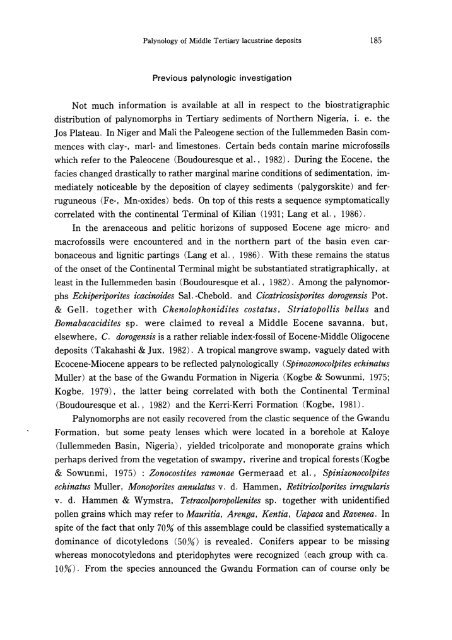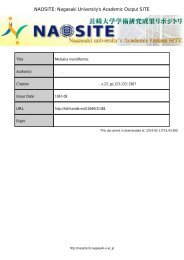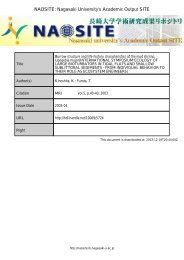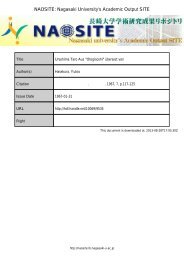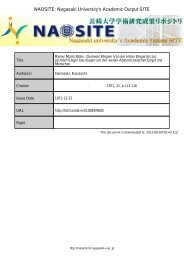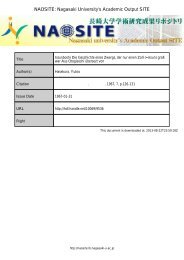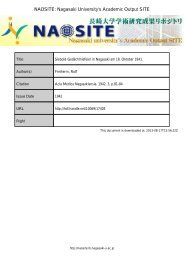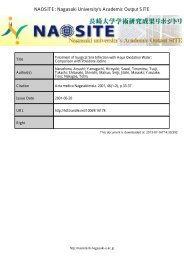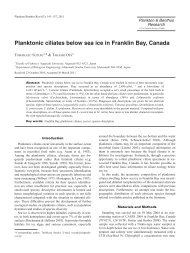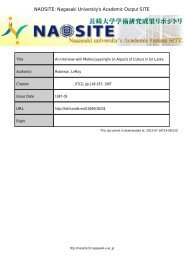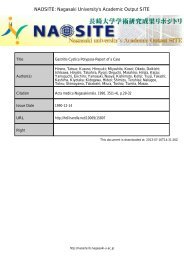Palynology of Middle Tertiary lacustrine deposits
Palynology of Middle Tertiary lacustrine deposits
Palynology of Middle Tertiary lacustrine deposits
You also want an ePaper? Increase the reach of your titles
YUMPU automatically turns print PDFs into web optimized ePapers that Google loves.
<strong>Palynology</strong> <strong>of</strong> <strong>Middle</strong> <strong>Tertiary</strong> <strong>lacustrine</strong> <strong>deposits</strong><br />
185<br />
Previous palynologic investigation<br />
Not much information is available at all in respect to the biostratigraphic<br />
distribution <strong>of</strong> palynomorphs in <strong>Tertiary</strong> sediments <strong>of</strong> Northern Nigeria, i. e. the<br />
los Plateau. In Niger and Mali the Paleogene section <strong>of</strong> the Iullemmeden Basin commences<br />
with clay-, marl- and limestones. Certain beds contain marine micr<strong>of</strong>ossils<br />
which refer to the Paleocene (Boudouresque et aI., 1982). During the Eocene, the<br />
facies changed drastically to rather marginal marine conditions <strong>of</strong> sedimentation, immediately<br />
noticeable by the deposition <strong>of</strong> clayey sediments (palygorskite) and ferruguneous<br />
(Fe-, Mn-oxides) beds. On top <strong>of</strong> this rests a sequence symptomatically<br />
correlated with the continental Terminal <strong>of</strong> Kilian (1931; Lang et aI., 1986).<br />
In the arenaceous and pelitic horizons <strong>of</strong> supposed Eocene age micro- and<br />
macr<strong>of</strong>ossils were encountered and in the northern part <strong>of</strong> the basin even carbonaceous<br />
and lignitic partings (Lang et aI., 1986). With these remains the status<br />
<strong>of</strong> the onset <strong>of</strong> the Continental Terminal might be substantiated stratigraphically, at<br />
least in the Iullemmeden basin (Boudouresque et aI., 1982). Among the palynomorphs<br />
Echiperiporites icacinoides Sal. -Chebold. and Cicatricosisporites dorogensis Pot.<br />
& Gel!. together with Chenolophonidites costatus, Striatopollis bellus and<br />
Bomabacacidt"tes sp. were claimed to reveal a <strong>Middle</strong> Eocene savanna, but,<br />
elsewhere, C. dorogensis is a rather reliable index-fossil <strong>of</strong> Eocene-<strong>Middle</strong> Oligocene<br />
<strong>deposits</strong> (Takahashi & lux, 1982). A tropical mangrove swamp, vaguely dated with<br />
Ecocene-Miocene appears to be reflected palynologically (Spinozonocolpites echinatus<br />
Muller) at the base <strong>of</strong> the Gwandu Formation in Nigeria (Kogbe & Sowunmi, 1975;<br />
Kogbe,<br />
1979), the latter being correlated with both the Continental Terminal<br />
(Boudouresque et aI., 1982) and the Kerri-Kerri Formation (Kogbe, 1981).<br />
Palynomorphs are not easily recovered from the clastic sequence <strong>of</strong> the Gwandu<br />
Formation, but some peaty lenses which were located in a borehole at Kaloye<br />
(lullemmeden Basin, Nigeria), yielded tricolporate and monoporate grains which<br />
perhaps derived from the vegetation <strong>of</strong> swampy, riverine and tropical forests (Kogbe<br />
& Sowunmi, 1975) : Zonocostites ramonae Germeraad et aI., Spinizonocolpites<br />
echinatus Muller, Monoporites annulatus v. d. Hammen, Retitricolporites irregularis<br />
v. d. Hammen & Wymstra, Tetracolporopollenites sp. together with unidentified<br />
pollen grains which may refer to Mauritia, Arenga, Ken tia, Uapaca and Ravenea. In<br />
spite <strong>of</strong> the fact that only 70% <strong>of</strong> this assemblage could be classified systematically a<br />
dominance <strong>of</strong> dicotyledons (50%) is revealed.<br />
Conifers appear to be missing<br />
whereas monocotyledons and pteridophytes were recognized (each group with ca.<br />
10%). From the species announced the Gwandu Formation can <strong>of</strong> course only be


